QUEENS, New York — By midmorning, a steady stream of people are making their way to a cozy corner business in New York City's borough of Queens. Their destination? The Empanadas Café, celebrating its 20th anniversary this year.
“When we started, if our clients were not Latin American, they didn’t know what an empanada was,” owner Patricia Bernard said. “We had to explain to them that it was like a turnover. Today that’s not the case; people know empanadas, and it’s entered the U.S. vocabulary.”
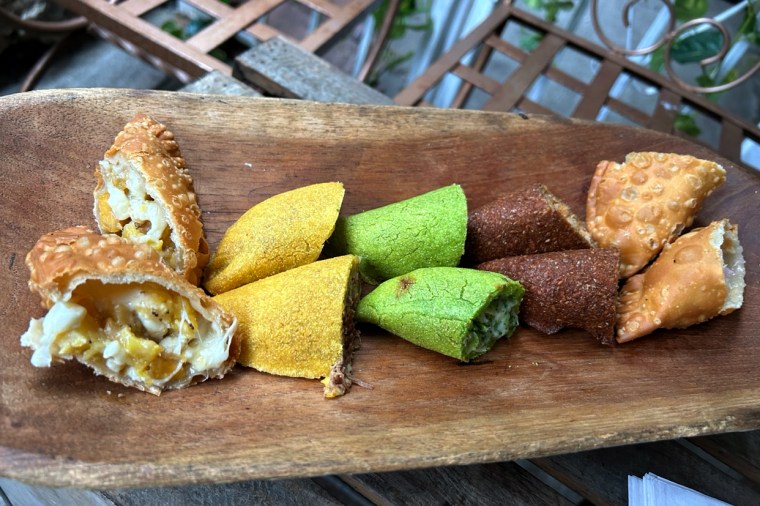
Here in one of the nation's most diverse counties, restaurant and café owners are among the broader wave of restaurateurs and chefs who have brought Latino flavors into the American culinary mainstream.
Whether it be through food trucks, neighborhood restaurants, or meal order or meal prep apps, food items and dishes known mostly to Latinos are now enjoyed by more diners, while still giving Hispanics a taste of home.
Empanadas — and then there's arepas
“Empanadas are comfort food for Latin Americans,” Bernard said, “and our American clients love them; they’re the first thing to go at parties.”
Her team makes empanadas with white flour (familiar to people from Argentina and Chile) and corn flour (popular with Colombians and Venezuelans) and fills them with ground beef, chicken, cheese or mixed vegetables.
Back in Queens, the word of mouth on Bernard's empanadas is so strong that the café has never had to advertise.
“People just find us,” she said. “Though once in a while, someone will come by and ask for a taco!”
Empanadas are far from uniform; as with other Latino foods, there are variations depending on the country of origin, and these differences may not be known to non-Latino diners. In Puerto Rico, they’re usually fried and are also known as empanadillas or pastelillos; in countries like Argentina and Uruguay, empanadas are usually baked.
In the Queens neighborhood of Jackson Heights, the Arepa Lady is a Colombian restaurant specializing in arepas, stuffed cornmeal cakes that are somewhat like empanadas — but not the same.
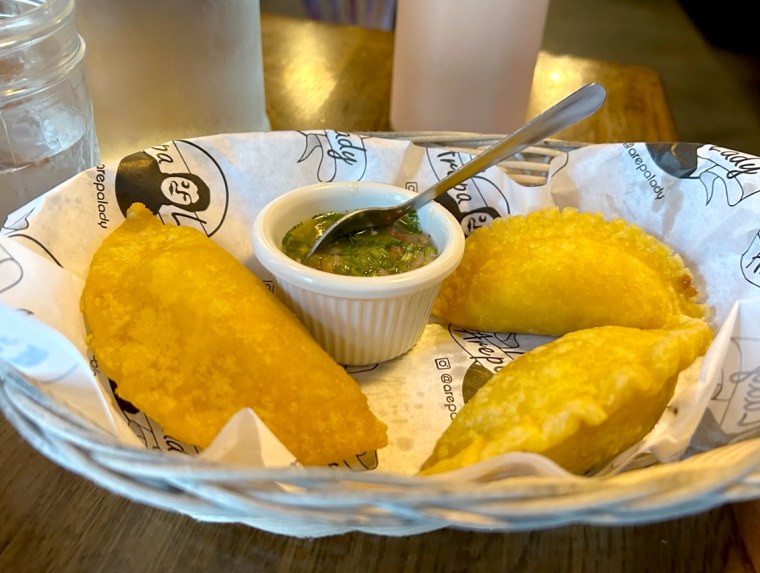
“In Colombia and Venezuela, arepas are mostly for breakfast, or street food,” manager Brandon Klinger said. “For some people from Latin America, it is strange to them at first, to see a sit-down restaurant for arepas. But we want people to have a different experience, and to taste something they won’t taste anywhere else.”
The Arepa Lady restaurant began as a food cart run by María Cano. A lawyer and a judge in Colombia, she fled to the U.S. in the 1980s to provide a better life for her family.
With work opportunities scarce, she started selling food on the street, including arepa de choclo (sweet corn arepa) and arepa de queso (a folded-over pancake made with corn flour and cheese). Her arepas inspired a devoted following, with one food critic writing for the New York Post in 2016 that they “had more lasting influence on the city’s eating scene than a dozen big-name launches featuring famous chefs and designers.”
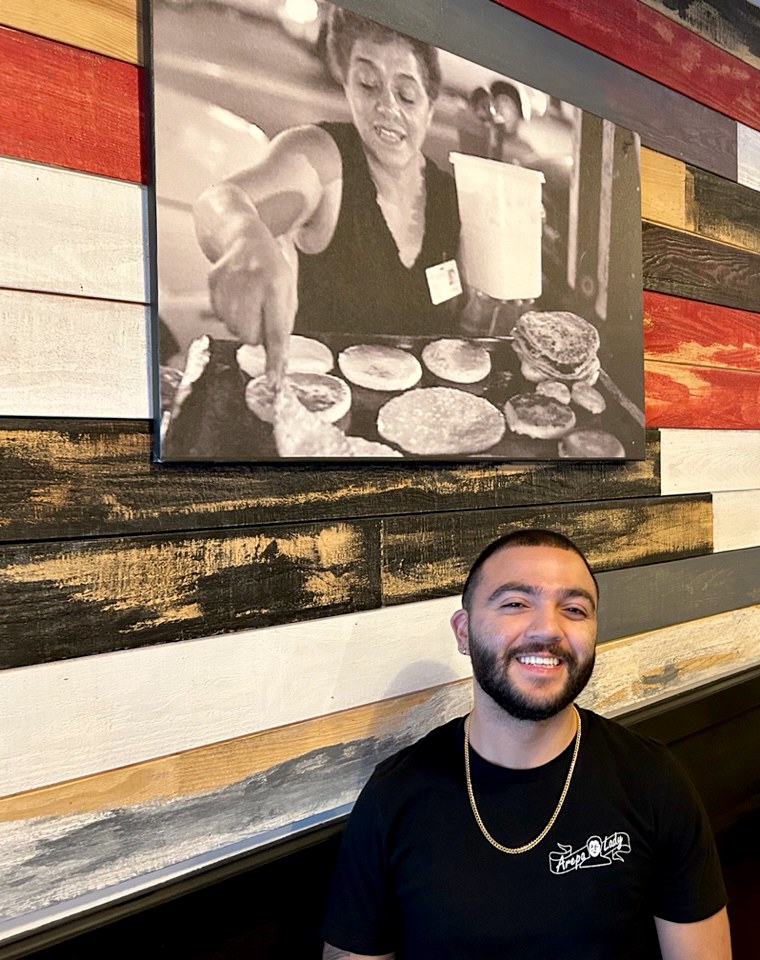
“We have very diverse customers,” Klinger said, gesturing to Asian, African American and Latino patrons sitting in the restaurant. “Sometimes people are surprised that we are a Colombian restaurant because arepas are so associated with Venezuela, but the two countries just give their arepas different names.”
As the U.S. Latino population has grown, so has the Latino influence on American food and drink. It has been over a decade since tortillas and salsa began outselling hamburger buns and ketchup, and tequila is poised to overtake vodka as the country’s top liquor.
Tamales — and then there's pasteles
Evelia Coyotzi, owner of Evelia’s Tamales, remembers when non-Latino customers did not know how to eat her signature offering. Tamales are a traditionally Mexican dish consisting of masa, made of hominy, which is wrapped around a filling and steamed in a corn husk. "They would bite into the husks; they didn’t know how to unwrap them," said Coyotzi, who's from Tlaxcala, Mexico.
Tamales are also found on the menu of Cuban restaurants, since they're also common in their cuisine, with a slightly different seasoning.
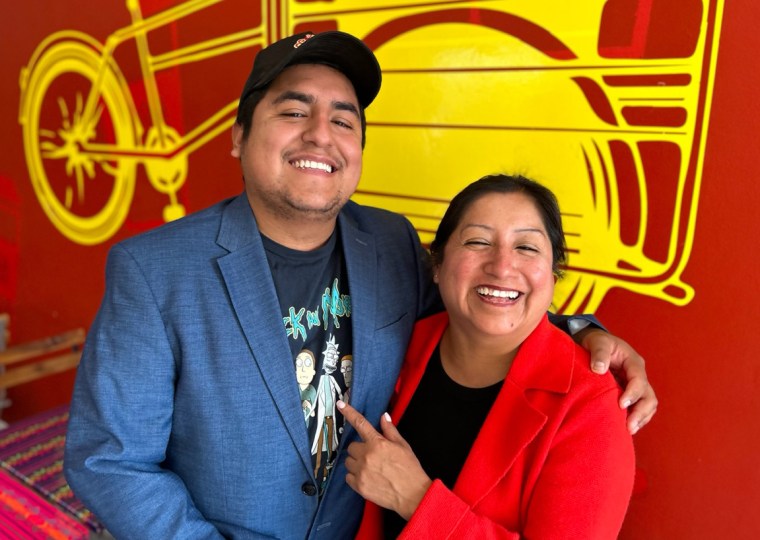
Because tamales are labor-intensive to make, many U.S. Latinos associate them with special occasions, like Christmas Eve or New Year's Day. But Coyotzi sells tamales year-round, and to great acclaim. She has been profiled by The New Yorker and hailed by Munchies, part of Vice, as “The $1 Tamale Queen of New York.”
Prior to opening her storefront café, Coyotzi spent 20 years selling tamales from a cart near an elevated subway line, starting at 4:30 a.m. each day.
These days, social media helps drive their business, according to Coyotzi’s son, John Garcia.
"Content creators, food writers, now they come to Queens, while before they mostly stayed in Manhattan," he said. "Videos made here go viral, and we get people from all over the world."
At The Freakin Rican restaurant in the Astoria section of Queens, which specializes in Puerto Rican food, executive chef and owner Derick Lopez said that his top sellers are pasteles. Unlike tamales, which are wrapped in corn husks, pasteles are usually made with a masa or dough made of green plantains that's filled "with a mixture of pork and roasted peppers inside," he said, that's then wrapped in a plantain leaf and steamed.
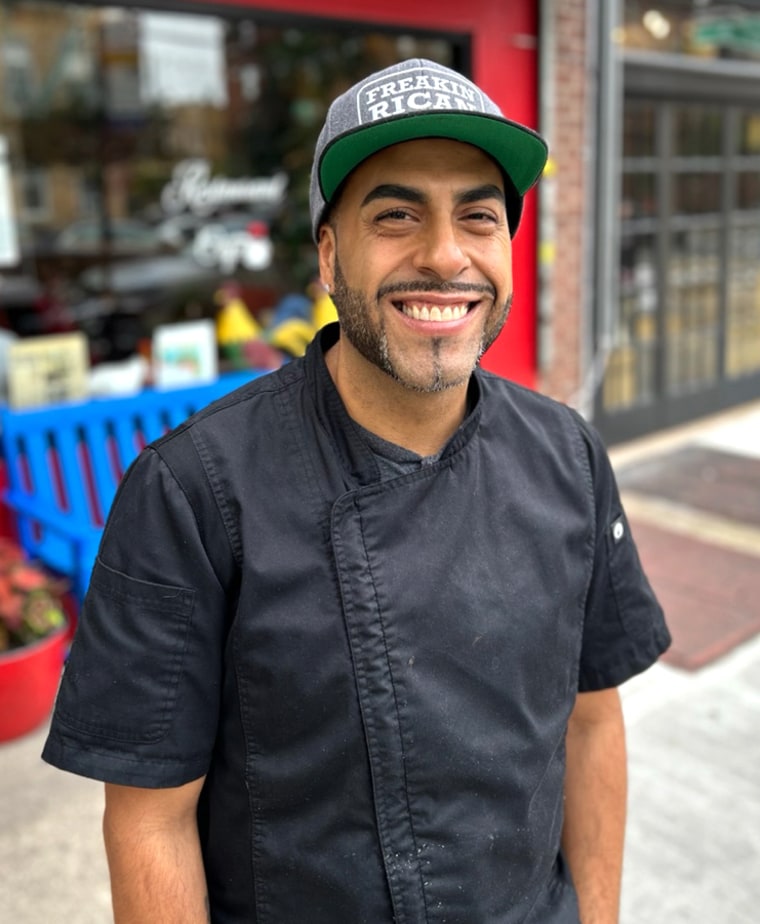
Inside The Freakin Rican, the late Afro Cuban singer Celia Cruz plays from the speakers as customers tuck into plates of pernil (roasted pork) and mofongo (fried green plantains with garlic mashed and shaped into a ball). Two preppy young men give Lopez a wave as they head out, calling, “Thanks, that was wonderful! Delicious! We’ll be back!”
Lopez learned to cook by watching his mother and by experimenting on his own. At times, he receives comments (from his YouTube channel) and emails from patrons, telling him that his dishes brought back memories of home, or of the cooking of a loved one who has died.
“It’s really touching. We’re just working, cooking, and then, wow, you realize what an impact food can make on people," Lopez said.
The food industry overall is changing for the better, said Alejandra Ramos, host of “The Great American Recipe” on PBS. For example, a generation ago, most people ate hard, crunchy tacos, often with store-bought shells that came in a box. Toppings were basic, usually ground beef and cheese. “Now, what we know of tacos is much more authentic than that.”
There are myriad factors that determine whether a particular Latin American dish catches on with the American public, including demographics and accessibility of ingredients, according to Ramos, who is also a contributor for NBC's “TODAY” show.
Because Mexican Americans are the largest U.S. Latino group, she explained, Mexican food has tended to be more widely available compared to dishes from other countries.
“If you think about popular Mexican dishes, like tacos or tamales, they use cornmeal, beef, things that can be easily obtained around the U.S. or can be imported easily," she said. "Other foods, which I grew up eating as a Puerto Rican, require ingredients that can be harder to get.”
'What could be more American than that?'
The Latino culinary influence on American tastes also extends to drinks — most notably coffee.
In different neighborhoods in Queens, the avenues are lined with small cafés offering café con leche (a shot of coffee in a cup of hot milk), café de olla (Mexican spiced coffee) and cortaditos (espresso with some steamed milk). While these names may be unfamiliar to some Americans, the flavors are likely not. Even Starbucks now offers customers recipes for making Cuban-style coffee.
“Coffee shops are really a great indicator of what trends are happening and what’s being added to menus," Ramos said. “Right now, in the coffee world there are a lot of young Latinos who are digitally savvy, and they are creating brands that are sustainable."
These younger entrepreneurs are stressing the fact that this coffee is being grown and picked and sorted by people of color and women in smaller, sustainable farms across the Caribbean and Latin America, Ramos explained.
By doing so, "they are bringing a more nuanced sensibility to the industry," she said.
Back at the Empanadas Café in Queens, Patricia Bernard is well aware that empanadas have become a favorite among all kinds of people. In addition to her Latino customers, her business serves diplomats at the United Nations, artists at museums and fans at the U.S. Open Tennis Championships.
“But our busiest day,” Bernard said, “is Super Bowl Sunday. What could be more American than that?”

